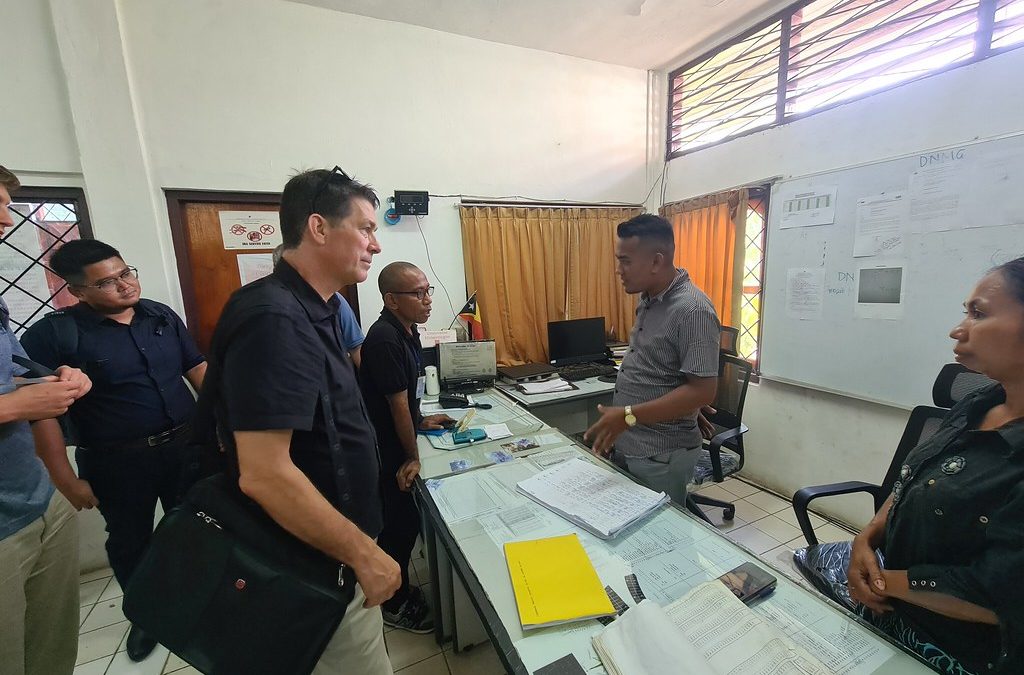Timor-Leste is an island nation that encompasses the eastern half of the tropical island of Timor. Situated on the southernmost edge of the Indonesian archipelago, northwest of Australia in Southeast Asia, Timor-Leste is ranked 141 out of 189 according to the World Food Programme’s human development index, and is faced with significant issues of food insecurity and poverty. Contributing to this vulnerability, Timor-Leste is frequently subjected to weather-related losses from monsoon rains, droughts, flash floods, landslides, and destructive winds.
Recognizing the concern climate change poses and its projected growth in the severity and frequency of these hazards, Timor-Leste’s government, through its Civil Protection Agency (CPA) and in coordination with Direção Nacional de Meteorologia e Geofísica (DNMG), initiated an early warning capacity enhancement project to help reduce ongoing impacts to the already vulnerable nation.
“This project represents an important moment for disaster risk reduction in Timor-Leste. Having a better and more up-to-date understanding of hazards and at-risk populations through the use of DisasterAWARE will help us prepare for and mitigate against hazard events—leading to a safer country,” said Civil Protection Commander Nuno Gomez who provided opening remarks at the Initial Engagement Workshop in Dili on October 18, 2022.
Funded by the International Organization for Migration (IOM) under a grant from USAID’s Bureau of Humanitarian Assistance, in partnership with the Timorese government and the University of Hawaii’s Pacific Disaster Center (PDC), the initial workshop included key national and international disaster management stakeholders, as well as a regional data subject-matter-expert, Open Mapping Hub – Asia-Pacific (part of the wider Humanitarian OpenStreetMap Team family) who are partnering on this project.
Chaired by the Timor-Leste Civil Protection Authority, the workshop included an overview of the planned project activities, along with a live demonstration of DisasterAWARE capabilities. Stakeholders were engaged to identify existing data available for integration into the system for operational use. In closing remarks, PDC’s Deputy Executive Director Chris Chiesa remarked that “our project team has only been on site for two days, but already we feel confident that we have found excellent partners in the Timor-Leste government to help ensure successful implementation.”
Over the coming months, Chiesa and PDC’s project team of experts will lead training and institutionalization activities for the operational use of the Center’s multi-hazard early warning and risk intelligence platform, DisasterAWARE, by Timor-Leste’s disaster management community. DisasterAWARE is a platform that provides powerful tools including hazard monitoring, early warning, hazard impact modeling and analytics to support the country’s disaster management strategy. At the request of the Timorese government, PDC will accelerate the project schedule to immediately provide DisasterAWARE training to national EOC operators in advance of the country’s wet season, which begins in December.
“We are honored to be able to provide technical assistance alongside our colleagues at HOT with whom we’ve partnered in the past to successfully develop critical data needed for effective disaster management decision making. I share my optimism with all parties about this project in helping to create a safer Timor-Leste as we all strive together to build a safer world.” said Chiesa.
“Based on my decade of operational experience using a custom version of DisasterAWARE, DMRS, at the AHA Centre, I am confident that this tool will be vitally important in supporting Timor-Leste’s government in preparing for, and responding to, the upcoming rainy season,” said IOM Consultant Arnel Capili.


